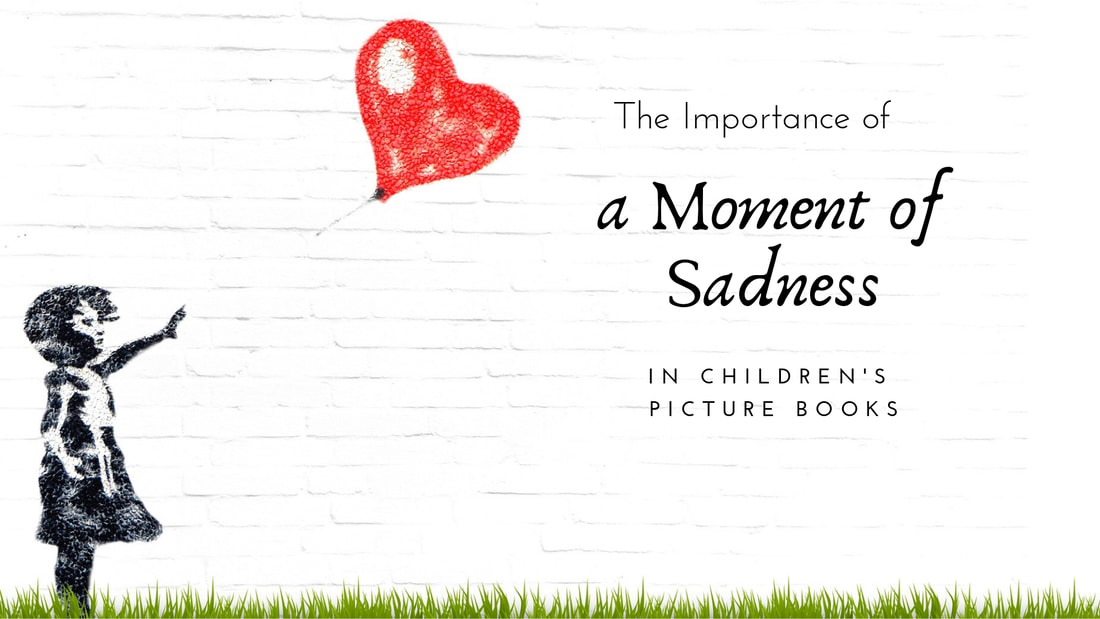|
It may not be intuitive to think about including negative emotions in a children’s book. After all, we don’t want to make the little guys cry, right? But including a moment of sadness in your picture book narrative can make for a more complete emotional journey for your character, and your reader, too. Think about adult stories, particularly one with a hero. There is always a moment when it looks like the bad guy is going to win, when the character is at their darkest place. All seems to be lost. Luke Skywalker’s hand has been cut off. Voldemort has Harry trapped. Then it’s time for the big finale where the hero defeats the odds and wins. While there (hopefully) aren’t dark, scary bad guys in picture books, including a moment of sadness or a feeling of loss for the character deepens the narrative. While the antagonist might be a character, it could also be an emotion such as fear, or a concept such as rejection. Examples of Moments of Sadness in Picture Books In Llama Llama Red Pajama by Anna Dewdney, Baby Llama is put to bed but then realizes he wants his mom to come back into the room. He makes several attempts to get her attention but she is downstairs and doesn’t hear him. There is an incredible spread with an expansive dark blue background and Baby Llama sitting in the darkness with a blanket pulled up over half his face. His eyes are wide and he wonders if his mom is gone. The feeling here is clear: fear. His dark moment is when he thinks his mother could be gone forever. The Snowy Day by Ezra Jack Keats also has a sad moment for the character. Peter spent his whole day exploring the wondrous, snowy outdoors. He brings home a memento of this special day in his pocket, a snowball. Of course when he wakes up and checks his coat pocket, the snowball has melted. His joy from the day before is seemingly gone. Another example is in It’s Christmas, David by David Shannon. David has been enjoying all things holiday...cookies, ornaments, making his list...and trying hard to be on the nice list. Finally the big day comes. When he wakes up on Christmas morning, he runs to the living room only to find a lump of coal. Reasons to Include a Moment of Sadness in Your Picture Book Manuscript It strengthens your character’s emotional journey and makes your story more compelling. Facing a challenge or dark time gives a more complete character arc and increases the reader’s attachment to the character. Were you a little upset that I stopped in the examples above before knowing what happened to those characters? Even in the short descriptions of the stories, you wanted to know that things turned out all right. Surely that mom came back to Baby Llama, right? That kid got his presents, right? Experiencing challenges makes us want to root for the characters even more. Children relate to negative feelings. If you’ve been around a child recently, you know their day can be quite an emotional roller coaster. From getting the wrong color cup, to their brother picking the TV show, to having to sing the song on stage in front of everyone...there are a lot of negative emotions during their days. They feel angry, sad, scared, overwhelmed, and everything else under the rainbow. They relate when a character is afraid like Baby Llama or sad like Jack and his melted snowball. Including negative emotions in stories shows kids that other people feel the same way they do and can also help them learn how to manage those feelings by seeing the character’s example. It makes the ending that much more sweet. Think about the emotional journey of a book character as a line. If the line is flat because the emotion has been flat throughout, then it peaks at the climax, the jump from just before the climax to the peak is minimal. If we have a big dip before the climax, the jump up to the peak is huge! We’ve gone all this way! The happy ending has significantly more emotional impact because of that great low we had before. When Mama Llama finally comes, we are so relieved. Phew. Baby Llama was really upset and afraid. We are so happy they are back together. When David realizes the coal is just a bad dream and he wakes up and finally sees his presents, we are thrilled. He worked hard and deserved those. Of course a moment of sadness may not fit the structure of every picture book. Books such as the How Do Dinosaurs…? series by Jane Yolen don’t follow a typical narrative structure and a moment of sadness wouldn’t fit in the question and answer style she uses. Examine your manuscript and ask yourself if you follow a narrative structure and if you are trying to include a character arc. See if a moment of sadness would punch up the emotional impact of your story. Remember, if the kids connect with your character more, the more likely they will be to pick up your book over and over again. Happy writing!
1 Comment
10/9/2019 05:31:06 pm
I know that children are fond of happy endings, but there are times when they need to read some sad stuff. Most people think that this is bad parenting, but in my opinion, this is just bracing them for the future. Life is not fun, in fact, it is really horrible. If we let them think that it is a great life, then they will get shocked. We need to prepare them for what is to come in the future.
Reply
Leave a Reply. |
AuthorArielle Haughee is the owner and founder of Orange Blossom Publishing. Categories
All
|
Proudly powered by Weebly



 RSS Feed
RSS Feed